- Established 1982 -HOME: www.hiltonpond.org
THIS WEEK at HILTON POND Subscribe for free to our award-winning nature newsletter (Back to Preceding Week; on to Next Week) |
YELLOW-ISH WARBLERS, A SAPSUCKER, PREFACE: I've been learning these past two weeks to live without my life-long best friend Dr. James C. Shuman, who passed away in Decorah IA on 16 October 2022. As the guy who turned me on to birds in the 1970s--and as the only President of the Board of Trustees of Hilton Pond Center since it was chartered in 1999--Jim deserves recognition in a memorial edition of "This Week at Hilton Pond." Even so, as a fellow educator-naturalist, I'm certain Jim would insist this photo essay begin and end with nature-related info. I hope you'll read it all and learn about yellow-ish warblers, an agitated sapsucker, and the incomparable Jim Shuman. --Bill Hilton Jr. MORE (OR LESS)
All text, maps, charts & photos © Hilton Pond Center When you say "warbler," most birders first think of a small bird with plumage more or less yellow. However, several North American Wood Warblers--members of the Parulidae--lack yellow entirely. Think male Black-throated Blue Warbler or Black-and-white Warbler (above), whose names are precisely descriptive. And then there are those four yellow-less brown-and-white "ground-dwelling" species: Worm-eating Warbler, Northern and Louisiana Waterthrushes, and Ovenbird (below).
All text, maps, charts & photos © Hilton Pond Center Even among the "yellow-ish" warblers, intensity of color often varies greatly season-to-season, with breeding plumage of adults showing much more yellow than what we see in autumn migrants or immatures. But there's one species in which the amount of yellow is quite different depending on an unexpected factor: Where its members live. We speak here of Palm Warblers, which nest across of much of Canada and seldom appear in the Carolina Piedmont outside of migration. All Palm Warblers are classified as the same species, Setophaga palmarum, but there are two distinctly different races. Despite external differences, both kinds are similar in having noticeable yellow undertail coverts, pale yellow rumps, some degree of chest streaking, and a broken eye ring; in breeding season both sport a bright rusty cap. So far this fall at Hilton Pond Center we have captured and banded one representative of each race, illustrated below.
All text, maps, charts & photos © Hilton Pond Center
All text, maps, charts & photos © Hilton Pond Center
All text, maps, charts & photos © Hilton Pond Center The "Western" Palm Warbler breeds in Canada west of James Bay on the border of Ontario and Quebec. Its representatives tend to be pale (see three photos just above), with a whitish to buffy superciliary line (the so called "eyebrow"). Yellow on the breast is minimal--the belly is white--although the throat in the "Western" race "yellows up" considerably during breeding season. Chest and flank streaking tends to be faint and more grayish. Eastern breeders--Called "Yellow" Palm Warblers (see four photos below)--are pretty much brighter all over their undersides, with yellow bellies and prominent rusty streaking. In our experience--admittedly limited with just 63 banded at the Center in 41 years--a bright superciliary line is the definitive characteristic for the "Yellow" race.
All text, maps, charts & photos © Hilton Pond Center
All text, maps, charts & photos © Hilton Pond Center
All text, maps, charts & photos © Hilton Pond Center We have rarely observed Palm Warblers during winter at Hilton Pond Center. Most that pass through in late fall are likely headed for Florida--where we've seen thousands on Christmas Bird Counts--or Cuba, the Caribbean, and parts of Mexico and Central America. Smaller populations overwinter along the coast from Maryland's Delmarva Peninsula around to Texas. In all those places Palm Warblers may hang out in palm trees, but they never nest there. (Note: Despite differences in their breeding ranges, the two types of Palm Warblers are indeed genetically close and are not split into separate species. However, the Bird Banding Lab does request banders use different alpha codes when reporting the two races: YPWA for "Yellow" and WPWA for "Western.")
All text, maps, charts & photos © Hilton Pond Center Behaviorally, both races of Palm Warbler are similar in almost constantly flicking a tail with noticeable white spots on the tips of the outer feathers. It's a good "field mark." Next spring you can look for that bright rusty crown--sported in the photo above by a mature yellow-browed "Yellow" Palm Warbler. (Note also the bill in adult breeders is entirely black, compared to a lighter base on the lower mandible in younger individuals depicted in our other photos.) All text, maps, charts & photos © Hilton Pond Center MEMORIES OF DR. JAMES CLINTON "JIM" SHUMAN 6 April 1945—16 October 2022 So let me tell you about the late Jim Shuman, our relationship, and what he meant to Hilton Pond Center for Piedmont Natural History--and other organizations and people we both knew. (Jim and I both loved to tell long stories--he called us "weavers"--so please read on in his honor.) I've heard people describe folks they've known for 25 years as "life-long" friends, but Jim and I go a lot further back than a mere quarter-century--58 years, four months, three weeks, and a couple of days, to be exact--all the way to mid-June 1964.
All text, maps, charts & photos © Hilton Pond Center I met Jim Shuman that year in West Virginia at the National Youth Science Camp. I (nerdy camper photo, above left) was selected by my governor as one of two delegates to represent South Carolina;
All text, maps, charts & photos © Hilton Pond Center Sometime in the early 1970s Jim linked up with college chum (and fellow Carleton astronomy major) John Elk for an excursion across the Sahara Desert and elsewhere. The trip took a while, but I do remember Jim sending me a letter describing all the birds he had seen on his train ride from Ouagadougou to Bobo-Dioulasso; included were several bird stamps. (Before you run to Google Maps, I can tell you these are cities in what is now Burkina Faso--formerly Republic of Upper Volta--a land-locked country in West Africa. The bird stamps, left to right, depict Pygmy Sunbird, Olive-bellied Sunbird, and Splendid Sunbird.)
All text, maps, charts & photos © Hilton Pond Center The Hilton-Shuman relationship really took root in the early 1970s when Jim and I and my new wife Susan (aka The Newberry Goddess) all served on the NYSC staph. From then on all three of our lives intertwined in myriad ways, often with Science Camp as the focal point. (That's Susan at left above and me at center with a stylish afro; tall-guy Jim is at right. We're all wearing spiffy gold staph blazers--camp delegates wore navy blue--while loading our plates at The Greenbrier hotel on a Science Camp outing. I'd be remiss in not mentioning Susan was almost as close to Jim as I, so his passing hit her really hard, too.) It was in 1974 that Jim initially came to York SC, where Susan and I were building our first house (called "The Styx" because we had to go through Hades to finish it). After pounding some nails, Jim and I hopped a barbed wire fence and took a long stroll through nearby woods and farmland, he toting his omnipresent binoculars and I an SLR camera and tripod. I was deeply into wildflower photography while Jim was enamored of birds (including Roseate Spoonbills)--an aspect of natural history in which I had no particular interest. (To be honest, back then I thought watching birds was a really dumb thing to do.)
All text, maps, charts & photos © Hilton Pond Center At some point during our walk Jim spied a Downy Woodpecker (above) excavating a hole in a dead-standing tree and focused his binocs on it. Entering his educator-naturalist persona he started gushing about the bird--See the red spot on the nape? That makes him a male. . . . Watch how he hammers a while, flicking the wood chips out of his way. . . . Oh, here comes the female. See, I told you! No red spot!--and eventually gave up his optics to me so I could get a better view. I watched for a while, asked some questions about woodpeckers, and took a couple of wildflower photos before we came back in from the field trip. Next day Jim left for home but, unknown to him at the time, his excitement over that woodpecker was ringing in my head as I ordered my first good pair of binoculars.
All text, maps, charts & photos © Hilton Pond Center Several months later I had the flu and was home at The Styx in bed, miserably gazing out the window and wondering how the substitute teacher was faring with my biology students at Fort Mill High School. Suddenly a little brown bird hopped onto the second-floor windowsill, singing loudly enough to be heard through glass. In my feverish state I thought it was saying Jim Shuman, Jim Shuman, Jim Shuman, and it was only after my fever broke I confirmed in a phone call with Jim my sickbay songster was actually a boisterous Carolina Wren yodeling Tea-kettle, tea-kettle, tea-kettle."
All text, maps, charts & photos © Hilton Pond Center Following the annual Science Camp session in Summer 1975, Jim, Susan, and I and a bunch of staph members car-pooled from West Virginia to The Styx, where everyone helped stain woodwork and decking on the house still under construction. From there we all took off for South Carolina's Edisto Beach State Park (above) for some tent camping. Jim led morning bird walks on beach and dune and I gave several ecstatic staphers their first taste of saltwater foam. (One of them--a guy, no less--even acknowledged he just might survive a few days without access to a hair dryer at our primitive campsite.) Despite his best efforts, none of Jim's favorite Roseate Spoonbills were to be found in Edisto estuaries.
All text, maps, charts & photos © Hilton Pond Center By Fall '75 I was paying a lot more attention to birds, a life change Jim Shuman skillfully reinforced when he and his father Ruhl invited me and Susan and several Fort Mill students to join them at Hawk Mountain Sanctuary in eastern Pennsylvania for the October raptor migration. ("Old Shu" had gotten son Jim bird-oriented at a much younger age.) Sitting amid fall colors on Kittatinny Ridge at North Lookout (above) and watching hundreds of hawks and falcons and eagles fly by at eye level was both inspirational and life-changing for all of us, and we returned the following autumn to do yet another Hawk-Gawk. In February 1977 Billy Hilton III was born to Susan and me and it only seemed appropriate we ask Jim to be Billy's godfather. Jim drove down from West Virginia and we all went off to our alma mater Newberry College for the baptismal service in the college chapel. Back home, August through June I was in the field watching birds on my own or taking students on weekend birding trips, corresponding with Jim Shuman all the while about what we were seeing.
All text, maps, charts & photos © Hilton Pond Center Susan and Jim observed that my interest in birds was growing exponentially and both correctly deduced I wanted to formalize my studies even further. So, in a big "early mid-life" change, Susan and and I sold our almost-new house in York and went with young Billy to far-off University of Minnesota, where I spent four very long, very cold, very dark winters (plus warm springs, summers, and autumns) studying the behavioral ecology of Blue Jays. That's also when I was introduced to the art and science of bird banding and ended up color-marking 1,500 adult and nestling jays (above). Jim--who was immersed in his own masters and doctoral programs in Recreation and Parks at West Virginia University (emphasis: environmental education)--came to visit us in Minnesota, bringing wife Shevonne and newborn Corey who stayed behind as Jim and I wandered a nearby wildlife management area looking for ducks. (Despite the extensive wetlands, no Roseate Spoonbills were expected in Minnesota!)
All text, maps, charts & photos © Hilton Pond Center After Jim and I finished our graduate programs, the Hiltons returned to York County SC where I then taught biology at Northwestern High School and Winthrop University. In 1982 Susan and I bought the farmhouse and 11-acre property that now make up Hilton Pond Center for Piedmont Natural History, where I quickly got down to the business of banding birds. I was also interviewed by North Country Public Radio about my natural history research. When introducing me, Jim invariably pointed out how HE was the person who got me interested in Class Aves and, by default, Ruby-throated Hummingbirds (adult male, below). Incidentally, by now we both had added second sons, our respective spouses bearing Ryan (Jim with Shevonne) and Garry (me with Susan).
All text, maps, charts & photos © Hilton Pond Center From our grad school days onward Jim and I remained involved one way or another with the National Youth Science Camp and its parent organization, the National Youth Science Foundation. We served in various staph capacities--he was NYSC Director for two years--and in the late 1990s I was hired as Director of Program Research for the NYSF. We became a close-knit two-man team--he in Upstate New York and I in the South Carolina Piedmont--collaborating on everything from innovative science education programs to designing facilities to grant-writing. Jim and I met regularly in New York, West Virginia, and South Carolina, and several times in Washington DC, where we sometimes dropped in for unscheduled but productive meetings with high-ranking government officials. We were on the phone almost daily, bouncing around our latest ideas and often chatting about birds we had seen in our respective locales. We employed different styles--I joked we were The Greaser (him) and the Hammerer (me)--but we were complementary, almost never argued, and thoroughly enjoyed working together.
After he and Shevonne parted ways Jim met his soulmate in the person of Laurie Buys Holena (above right with Jim), who became his wife in a 1996 ceremony involving students at a Gouverneur NY elementary school where she was principal. I flew up from South Carolina to shoot the official video, its soundtrack punctuated by shouts and cheers from hundreds of little kids in the school cafetorium. (Laurie had promised her students an in-school wedding if they met reading goals for the year, and Jim enthusiastically supported the plan and their effort.)
All text, maps, charts & photos © Hilton Pond Center Now married, Jim and Laurie eventually bought a gorgeous little cottage with boathouse on the St. Lawrence River near Morristown NY, so Capt. Jim (above)--an avid fisherman--got himself a motorboat and took great pride in showing the waterway to folks like us Hiltons. We always liked to cruise up and down the Seaway, especially when we ended up across the river for an international breakfast at a Brockville, Ontario restaurant.
All text, maps, charts & photos © Hilton Pond Center In years following, I visited the Shumans in Morristown (once with Susan, photo above), always enjoying good company and long, woven stories. (Jim and I were both inveterate weavers.) We all appreciated that the Shuman cottage faced west, allowing us to watch the sun setting over Brockville, Canada across the river (below)--Jim taking to heart and often repeating my personal maxim of: Never trust a person too lazy to get up for sunrise or too busy to watch the sunset.
All text, maps, charts & photos © Hilton Pond Center On one of my most memorable--and very frigid--mid-winter trips north, Jim and I journeyed into the snowy hinterlands of St. Lawrence County, where I was pleased to show him his lifer flock of Bohemian Waxwings (below). His comment: Wow! They're like Cedar Waxwings on steroids, but with heavier make-up!
All text, maps, charts & photos © Hilton Pond Center I took great pleasure in sharing my latest nature exploits with Jim Shuman via phone and letter, whether it be bird banding results at Hilton Pond Center or some casual observation I'd made while walking the property.
All text, maps, charts & photos © Hilton Pond Center Susan and I were always eager for Jim to come see us at Hilton Pond, sometimes with Laurie, and to walk the trails I wrote about in "This Week." Most times we'd enjoy a sumptuous meal prepared by The Goddess and after dining we'd deploy mist nets and catch a few birds for banding--such as the Chipping Sparrow he's holding above just prior to its release. (Jim always wondered if we ever got Roseate Spoonbills on the pond.)
All text, maps, charts & photos © Hilton Pond Center One trip Jim made from New York to South Carolina was to reconnect with his godson, Billy III. (When he graduated from high school in 1995 Billy had tightened the Hilton-Shuman connection by following in the footsteps of his father AND godfather by being selected as a South Carolina delegate to the National Youth Science Camp. As such, he was the first "son of a science camper" since the camp began in 1963--and undoubtedly was the first "godson of a science camper," too.) Jim's 2008 visit, however, was primarily to officiate in the wedding of Billy and his fiancée Amanda Hurt in Hickory NC. Among other accomplishments through the years, Jim and wife Laurie had attended seminary and gotten ordained as interfaith ministers, so Jim was glad to help Billy and Amanda tie the knot 31 years after he stood as sponsor at Billy's baptism. Being a minister was a perfect adjunct activity for easy-going thoughtful Jim, allowing him to counsel and support folks in times both good and bad.
All text, maps, charts & photos © Hilton Pond Center As much as we Hiltons enjoyed hosting Jim in South Carolina, perhaps my most fulfilling experience with him came when he signed up as a "citizen scientist" on one of my Neotropical research expeditions--part of Operation RubyThroat: The Hummingbird Project. There, in the Chayote fields around Ujarrás, Costa Rica, Jim got to observe me for nine days in my dual roles of researcher and teacher, and even to hold a Scintillant Hummingbird. (Jim wondered if he'd ever be that close to a Roseate Spoonbill.) There was nothing the two of us enjoyed more than learning new things and sharing that knowledge with others, so I was deeply satisfied to share with Jim Shuman in Costa Rica. We were inveterate, incurable, insatiable educator-naturalists, and Costa Rica was nature heaven.
All text, maps, charts & photos © Hilton Pond Center Jim was devastated by the loss of his wife of 23 years, so I made a trip south to Florida shortly thereafter to be with him. We reminisced about Laurie, of course, but to soothe his soul we spent a lot of time birding, first at Shalom Park at On Top of the World and then at Sweetwater Wetlands Park in nearby Gainesville--a beautifully implemented artificial wetland that is home to an amazing array of wildlife and native birds. Jim was entranced by resident Limpkins (above)--although we didn't see any of those elusive Roseate Spoonbills that had been reported.
All text, maps, charts & photos © Hilton Pond Center Before I departed for home, Jim and I participated in the Marion County FL 2019 Christmas Bird Count, our sector including Jim's residence at On Top Of The World. Birds seemed surprisingly scarce for Florida, with Palm Warblers and crows outnumbering all other species. Our five-person group in two parties tallied 44 species--no Roseate Spoonbills in our sector--with my personal "Bird of the Day" being a very brightly colored Yellow-throated Warbler. I managed to get a photo of a Red-shouldered Hawk (RSHA, above) perched on a power pole at the community recycling facility. To my eyes (and Jim's) this raptor seemed quite small and pale--especially by comparison to RSHA that are regulars at Hilton Pond Center.
All text, maps, charts & photos © Hilton Pond Center Jim and I communicated even more frequently post-Laurie, especially since the stress of bereavement seemed to worsen his back problems. Within six months he required re-constructive spinal surgery and residential rehab. Susan and I drove to Ocala in July 2020 to pick him up on discharge and brought him back to Hilton Pond for a few days of rest before he flew on to Decorah IA. There his elder son Corey and partner Kyra were waiting to take him in and help him get better. For the next year Jim was part-time in Iowa looking at Decorah's famous Bald Eagles (above), part-time in Ocala watching Burrowing Owls--religiously but painfully trying to get better at walking.
All text, maps, charts & photos © Hilton Pond Center In October 2021 Jim stopped off at Hilton Pond for several days during his southbound "snowbird" migration, at which time Susan and I made plans to meet him at his Ocala home on New Year's Day 2022--which we did (above). As was his custom, Jim greeted and honored us with OUR state flag. (Note also the Sabal Palmetto--South Carolina's state tree--in the background.) During that visit Jim and I demonstrated we were up with the times by designing a fully virtual summer science program for high school juniors, capable of being implemented with minimal environmental impact.
All text, maps, charts & photos © Hilton Pond Center Jim went back to Iowa this past spring and spent much of 2022 flying around the country. He was in West Virginia and Washington DC on behalf of the National Youth Science Foundation and then in Philadelphia, Boston, Colorado, and Arizona visiting with members of his melded but widespread family. Lest you forget Jim had an unusual and vibrant sense of humor, he reported he was particularly excited he, son Corey, and Kyra had stopped in at the Spam® Museum (above), in Austin Mn. In recognition of that auspicious occasion, Jim sent Susan and me a Spam® dish cloth, a Spam® refrigerator magnet, a Spam® post card, a Spam® car decal, and--most important--a Spam® meat slicer to make sure our Spam® slices henceforth were just the right thickness. Yummy!
All text, maps, charts & photos © Hilton Pond Center After Labor Day this year Jim flew on to Nantucket (aerial view above)--staying a bit with his brother Doug and wife Kathy. Jim mentioned plans to return to Iowa from there and then to drive south to Hilton Pond for my mid-September birthday celebration before heading to Florida for the winter season. Once back in Ocala he was scheduled to lead birding trips, some aimed at finding those coveted Roseate Spoonbills.
All text, maps, charts & photos © Hilton Pond Center Jim preceded his anticipated South Carolina stop-over by sending me an early 76th birthday gift--a lithograph of Charlie Harper's magnificent "Mystery of the Missing Migrants" (above). His inscription: Every time I've seen this illustration I think of you and your work with hummingbirds at Hilton Pond and in the Neotropics and of our memorable raptor-watching trips to Hawk Mountain in the 1970s. Migration IS full of mysteries. Maybe you'll unlock some of them. Happy birthday! What a cherished gift this will be. But then Jim Shuman's well-orchestrated 2022 travel itinerary quickly fell apart. While on the short 90-mile flight from Nantucket to Boston on 10 September a kidney stone dropped and lodged in Jim's ureter, causing intense pain that led son Ryan to escort him to the emergency room upon landing. Despite his discomfort, Jim opted a few days later to continue on to Decorah for treatment by his regular urologists affiliated with the Mayo Clinic.
All text, maps, charts & photos © Hilton Pond Center Although Jim texted me the "Bea Gulls" photo above on 20 September to show he was still in good humor, complications soon developed and pain-killers and high-dose antibiotics were prescribed. Jim was admitted sequentially to hospitals in Wisconsin and Iowa with the kidney stone eventually removed via laser lithotripsy--but discomfort came and went. He improved a bit over time, did physical therapy, and was slated for release on 17 October--a long five weeks after the kidney stone appeared. Tragically, Jim did not make it home as planned after his organs apparently failed on the 16th due to overwork and systemic infection. That afternoon I was stunned to get Corey's phone call delivering the unbearable news his dad had passed away peacefully that morning.
All text, maps, charts & photos © Hilton Pond Center During the two weeks since that call from Corey (that's him with Jim and me above in 2018) I found myself thinking of Jim several times a day, wondering why there's not some telepathic way I can send him a message about my latest natural history adventure. I doubt that urge to communicate will end anytime soon.
All text, maps, charts & photos © Hilton Pond Center I'm grateful that two days before passing Jim felt strong and lucid enough to proofread the 16-30 September installment of "This Week at Hilton Pond." I smiled out loud when he told me by phone he was tickled and touched I had quoted him in my latest photo essay, referencing his lyrical interpretation of the song of the Black-throated Green Warbler (above): Zo Zee Zo Zo Zeee. In light of his sudden demise I'm especially glad Jim and I had the chance for one more lengthy phone conversation on 15 October--the day before he died. (I always knew when he was calling since his ringtone for me was a turkey gobbling--but that's one of our countless funny stories for some other time. I believe Jim's brother Doug may have originated the turkey tale.) So it looks like I've now woven part of the Hilton-Shuman story, and I hope you can see why he meant so much to so many people. I'm glad for having known Jim Shuman during nearly 60 years. I'm glad for what he meant to me, Susan, Billy III, and Garry, and to Hilton Pond Center. I'm likewise glad to have met many of Jim's family members, and I'm glad he and I shared countless friends from diverse places. What a joy for Susan and me to have spent quality time with him during the past two years.
All text, maps, charts & photos © Hilton Pond Center Sometime a few years before he died I told Jim Shuman how much I appreciated our relationship and that I considered him my life-long best friend. With his usual thoughtfulness he responded with, "Bill, I think of you not as my best friend but as my closest friend." How much better a description was that because it summarized the depth and breadth of our affection for and understanding of each other. Jim Shuman and I were mates--in the Australian sense of the word--and his loss leaves a gaping hole in my heart and mind. I missed Jim last week, I missed him today, I'll miss him tomorrow and daily thereafter. I'll miss him every time I think of something I want to tell him to make him laugh or ponder, or when I want to convey that we were--and always will be--life-long CLOSEST friends. We knew without saying we loved each other in ways only such friends can understand. Rest in peace, Jim Shuman. The people you've taught and the good you've done make you immortal. P.S. Here, Jim, is your Roseate Spoonbill. You should have gone with me to Belize.
All text, maps, charts & photos © Hilton Pond Center IN MEMORIAM We have established a Jim Shuman Memorial Fund at Hilton Pond Center. Donations in his memory and honor will be used in part to plant hybrid American Chestnuts, a tree species in which Jim was interested after it was essentially eliminated from eastern hardwood forests. Donations can be made on-line via PayPal/Vimeo, via Network for Good (with credit card), or via check at the snail-mail address provided below. PAYPAL & VIMEO (funding@hiltonpond.org): Hilton Pond Center for Piedmont Natural History WINTER CADENCE BEGINS
All text, maps, charts & photos © Hilton Pond Center Tap. All text, maps, charts, photos, and prose poems © Hilton Pond Center HILTON POND SUNSETS "Never trust a person too lazy to get up for sunrise
All text, maps, charts & photos © Hilton Pond Center Sunset over Hilton Pond, 16 October 2022 Tonight's unusual sunset photo is the saddest I have posted, for it
All text, maps, charts & photos © Hilton Pond Center Sunset over Hilton Pond, 28 October 2022 Sometimes the sunset is made even better by Earth's biggest
All text, maps, charts & photos © Hilton Pond Center Sunset over Brockville, Ontario, 13 June 2006 Sitting atop the Shuman's boathouse at Morristown NY, Don't forget to scroll down for lists of Hilton Pond supporters and of all birds banded and recaptured during the period. Photoshop image post-processing for this page employs |
|---|
|
"This Week at Hilton Pond" is written and photographed by Dr. Bill Hilton Jr., executive director of Hilton Pond Center for Piedmont Natural History
|
|
|
Please refer "This Week at Hilton Pond" to others by clicking on this button: |
|

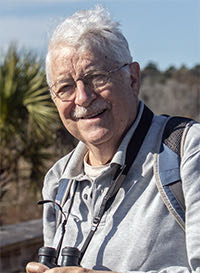 Jim had been suffering the past few years from less-than-successful back surgery and, more recently, from a kidney stone gone rogue.
Jim had been suffering the past few years from less-than-successful back surgery and, more recently, from a kidney stone gone rogue.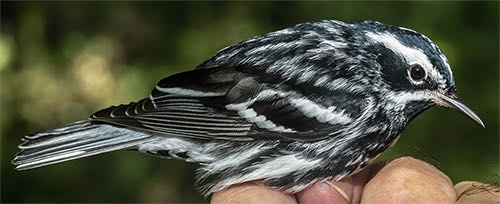
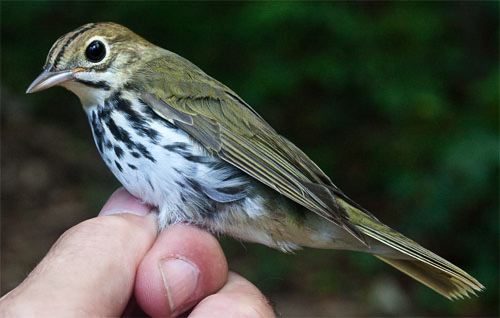
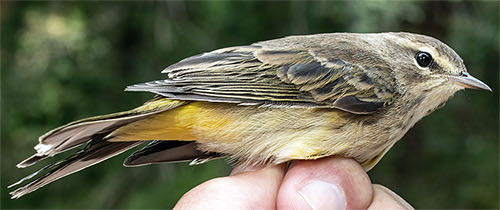

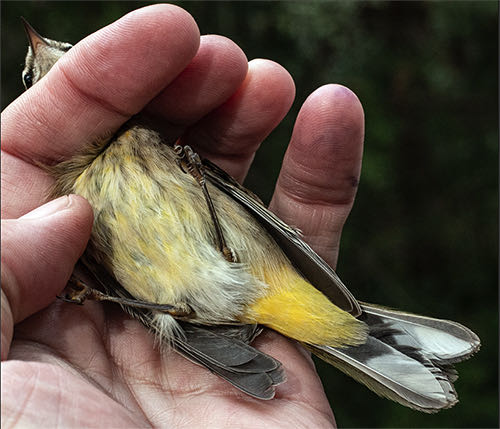

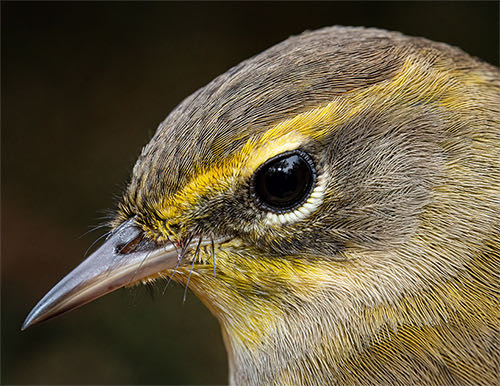
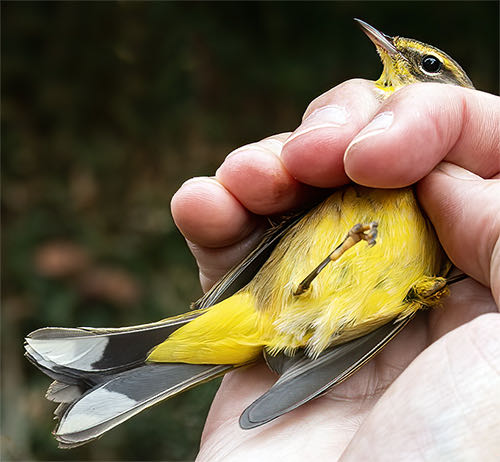
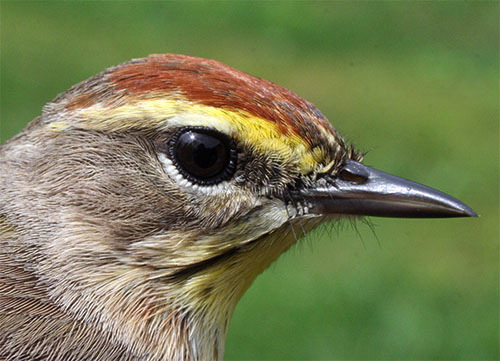
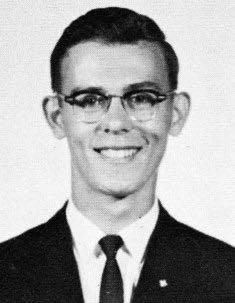

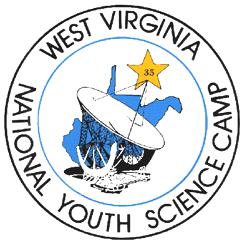 handsome Jim
handsome Jim 
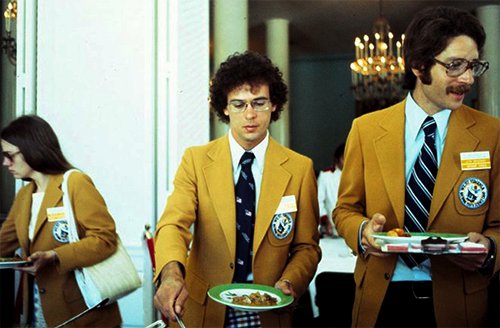
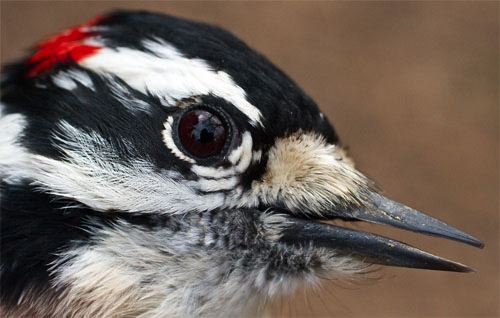
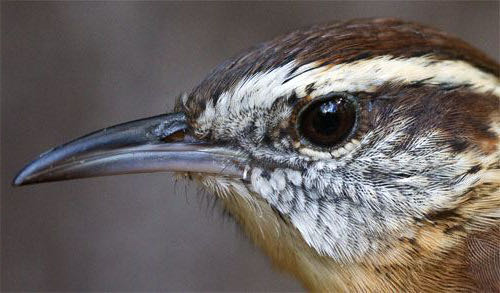
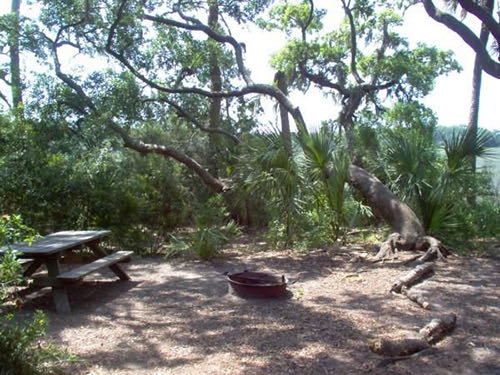

 My students' enthusiasm was boundless but when they started asking questions I could not answer it became obvious I needed better training in bird lore. Jim suggested I take a course in ornithology--which is exactly what happened when Susan, four-month-old Billy III, and I went off to Mountain Lake Biological Station in Virginia in the summer of '77.
My students' enthusiasm was boundless but when they started asking questions I could not answer it became obvious I needed better training in bird lore. Jim suggested I take a course in ornithology--which is exactly what happened when Susan, four-month-old Billy III, and I went off to Mountain Lake Biological Station in Virginia in the summer of '77. 
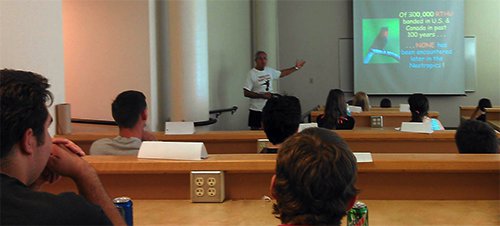
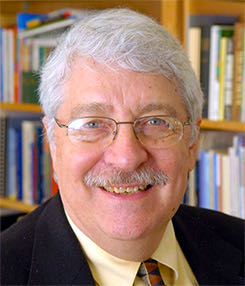 Jim taught at various colleges and eventually ended up in Canton NY at St. Lawrence University in 1989, offering teacher education courses in the department for which he became chair.
Jim taught at various colleges and eventually ended up in Canton NY at St. Lawrence University in 1989, offering teacher education courses in the department for which he became chair. 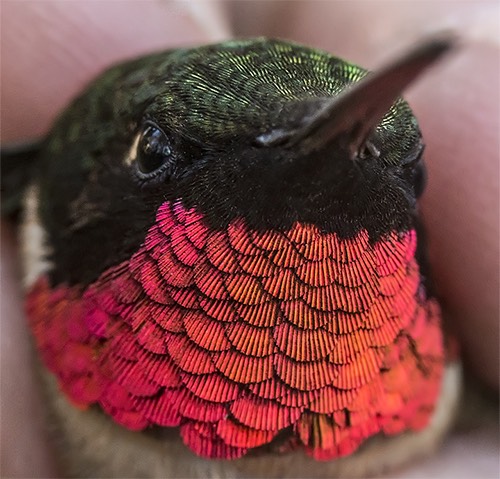
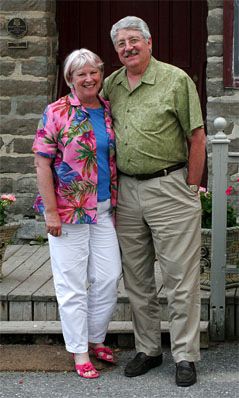 NOTE: I probably should have stated this earlier, but most in-person and phone conversations between Jim and me involved lots of laughter. We learned from our spouses--who could only hear half those phone chats--that there seemed to be more laughing than strategizing going on. I confess that was sometimes true but don't for one second regret laughing long and hard with Jim through the years. He was a funny guy and we truly loved to make each other guffaw. Sometimes we didn’t even have to say anything to set us off!
NOTE: I probably should have stated this earlier, but most in-person and phone conversations between Jim and me involved lots of laughter. We learned from our spouses--who could only hear half those phone chats--that there seemed to be more laughing than strategizing going on. I confess that was sometimes true but don't for one second regret laughing long and hard with Jim through the years. He was a funny guy and we truly loved to make each other guffaw. Sometimes we didn’t even have to say anything to set us off! 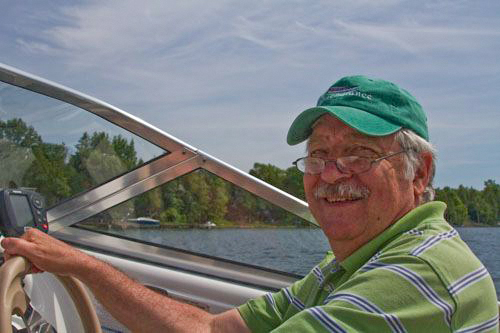
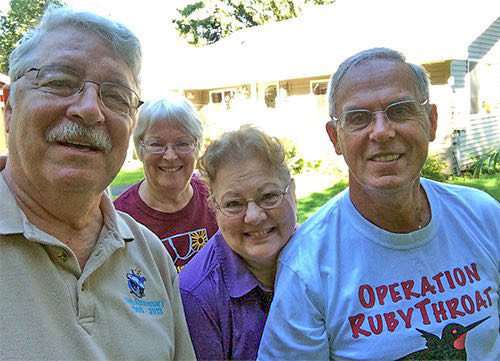


 He was highly supportive of my scientific and environmental education endeavors and was pleased I asked him to be President of the
He was highly supportive of my scientific and environmental education endeavors and was pleased I asked him to be President of the 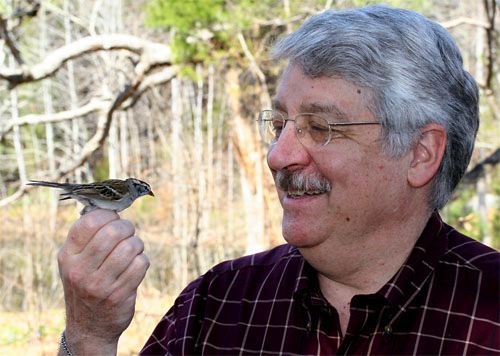

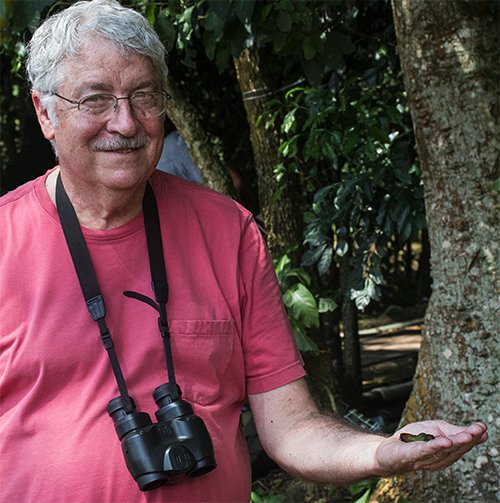
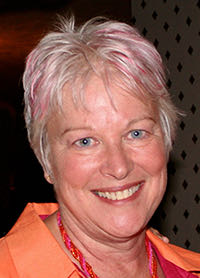 Cold weather along New York's St. Lawrence River--ice-bound every winter--eventually got the best of Laurie and Jim, so in 2017 after both were retired they moved to be near friends at On Top of the World, an adult community near Ocala FL. Jim immediately got involved with the local astronomy and birding clubs, writing newsletter articles for the former and leading field trips for the latter. He and his spouse enjoyed their warmer-weather existence at OTOW, dining out and playing cards and going to the fitness center, but in a sad twist Laurie
Cold weather along New York's St. Lawrence River--ice-bound every winter--eventually got the best of Laurie and Jim, so in 2017 after both were retired they moved to be near friends at On Top of the World, an adult community near Ocala FL. Jim immediately got involved with the local astronomy and birding clubs, writing newsletter articles for the former and leading field trips for the latter. He and his spouse enjoyed their warmer-weather existence at OTOW, dining out and playing cards and going to the fitness center, but in a sad twist Laurie 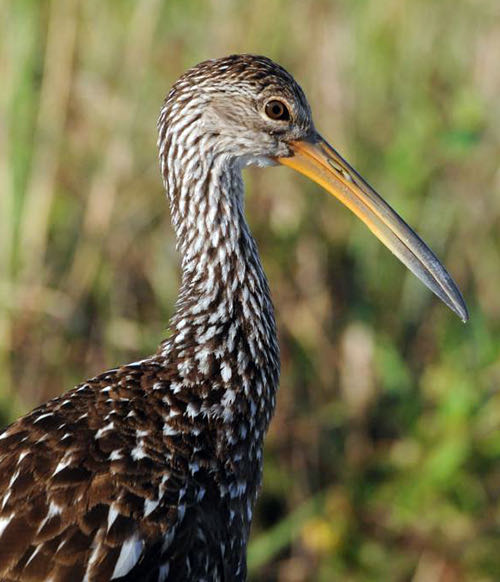
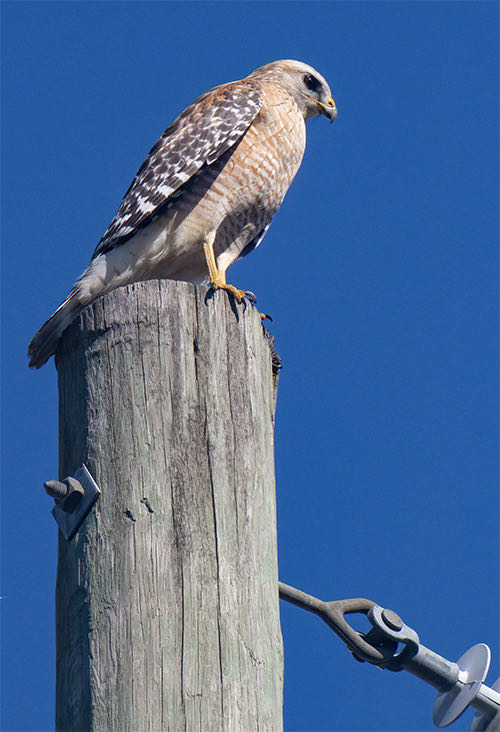
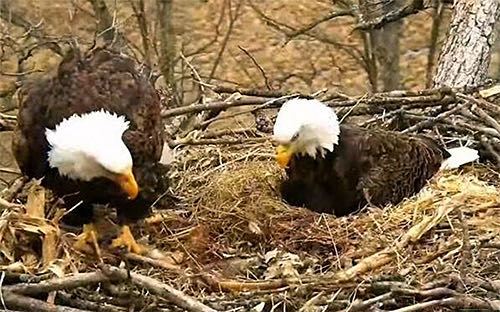
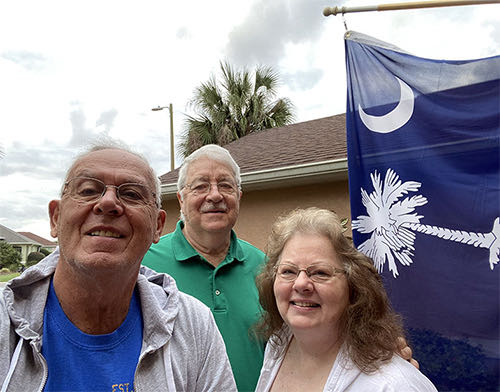

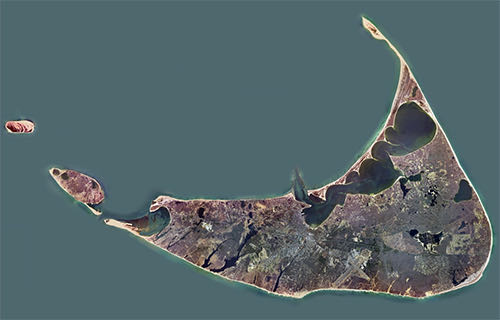

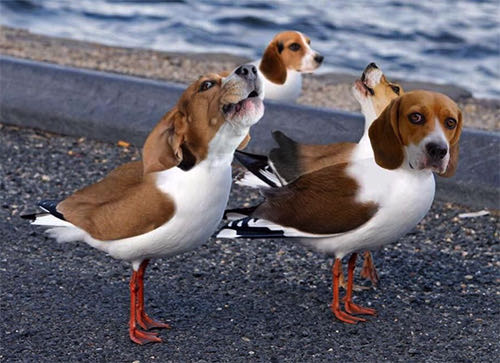
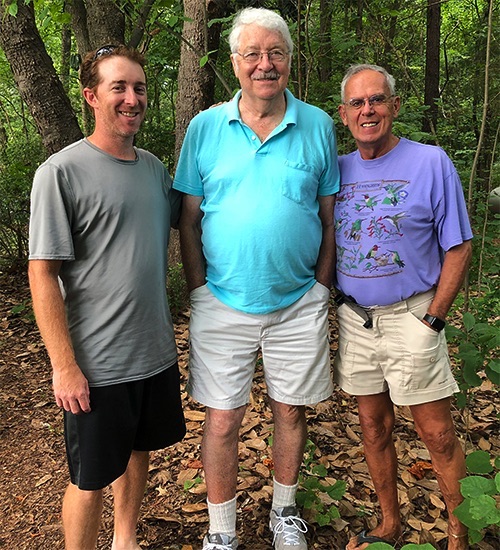
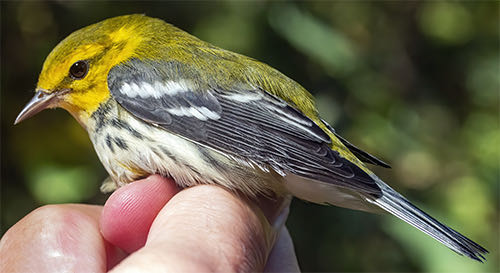
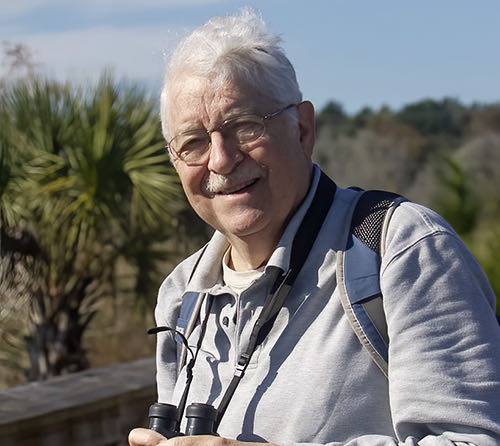
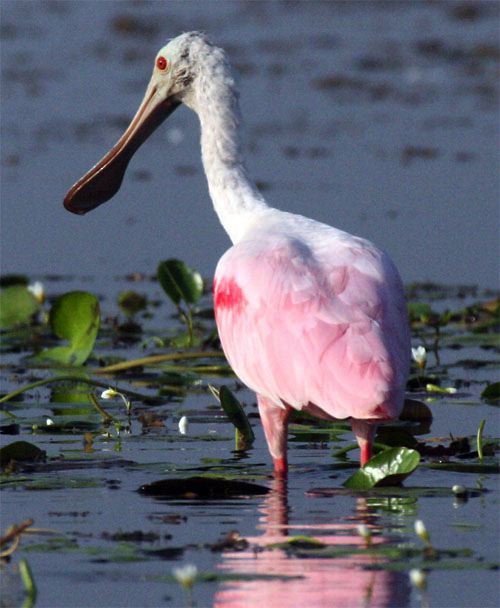



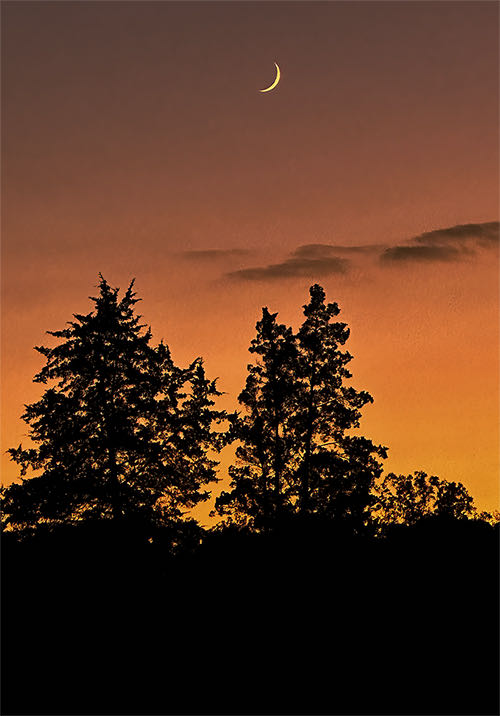
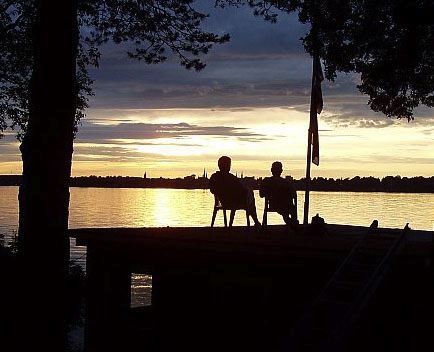







 Please report your
Please report your Oct 15 to Mar 15:
Oct 15 to Mar 15: